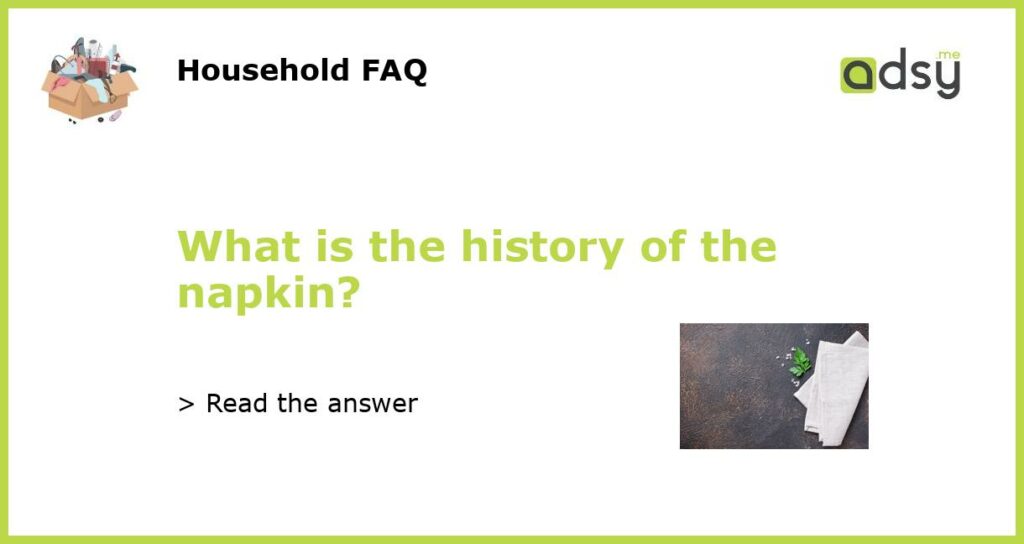The Origins of the Napkin
Napkins have been a common household item for centuries, serving a variety of practical purposes. The history of the napkin dates back to ancient times, where civilizations found different ways to use cloth or paper to clean themselves and their surroundings.
Ancient Civilizations and Napkins
The ancient Egyptians were among the first to use napkins, which were mainly made of papyrus. They would use these early versions of napkins to clean their hands and mouths during meals. Similarly, ancient Greeks and Romans would also use cloth napkins to wipe their mouths.
During the Middle Ages in Europe, napkins were primarily used by the upper-class nobility. It was a sign of wealth and privilege to have a separate cloth napkin for each member of the household. These beautiful linen napkins were often embellished with intricate embroidery or monograms.
The Rise of Paper Napkins
Paper napkins, as we know them today, didn’t become widely used until the 19th century. Prior to that, cloth napkins were the norm. However, with the invention of the Fourdrinier machine in 1803, which made the mass production of paper possible, paper napkins quickly gained popularity.
In 1887, Scott Paper Company introduced the first disposable paper napkins, which provided a more convenient option for households and businesses. The convenience and affordability of paper napkins led to their widespread use, eventually surpassing cloth napkins in popularity.
Napkins in Modern Times
Today, napkins play a crucial role in our everyday lives. They are used not only at home but also in restaurants, hotels, and other commercial establishments. Napkins have evolved to become an essential part of table settings and serve as a practical and decorative item.
With the rise of eco-consciousness in recent years, there has been an increased emphasis on sustainability in napkin production. Many companies now offer biodegradable or recycled paper napkins as more environmentally friendly options.
The Future of Napkins
As technology continues to advance, there may be new developments in napkin design and functionality. For example, there have been recent innovations in the creation of smart napkins, which can detect contaminants or provide information about the food being served.
As the world becomes more aware of the impact of disposable products on the environment, there may also be a shift towards more sustainable materials and practices in napkin production. This could include the use of organic fabrics or even the creation of reusable napkins that are specifically designed for durability and easy cleaning.
Whatever the future holds, napkins will likely continue to be an essential part of our daily lives. Whether made from paper or cloth, they serve a practical purpose while also adding a touch of elegance to any dining experience.






